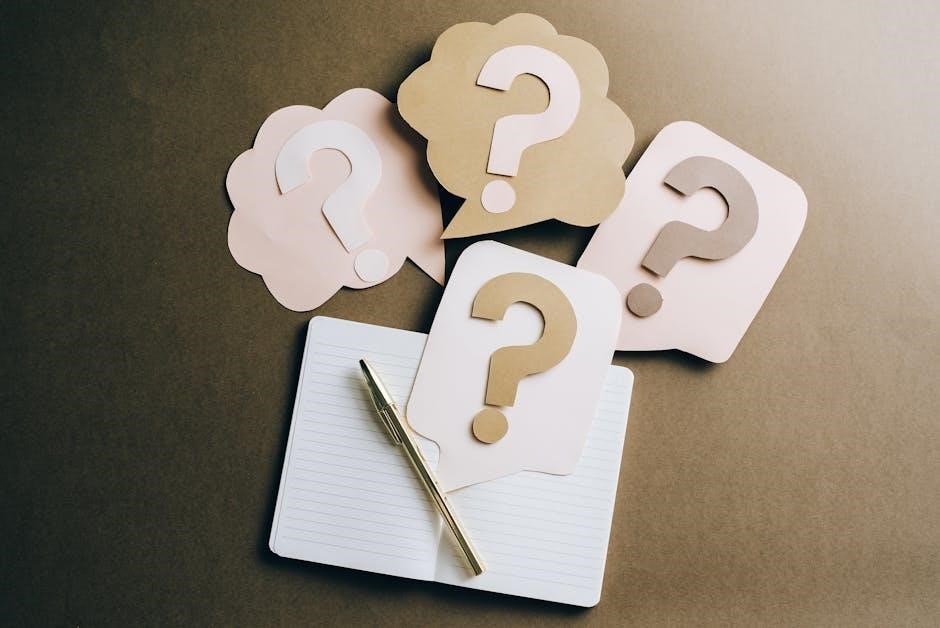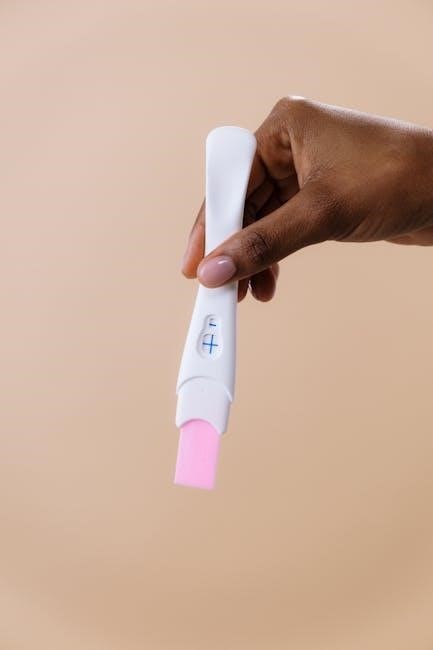Dressage tests introduce riders and horses to the sport, confirming their understanding of correct dressage principles. The Intro A test is designed to assess basic skills and obedience, providing a foundation for further development in the sport. It emphasizes clear communication between horse and rider, setting the stage for more complex movements in higher-level tests.
Overview of Dressage and Its Importance
Dressage is a highly disciplined equestrian sport that emphasizes the partnership and communication between horse and rider. Rooted in classical training, it focuses on developing the horse’s balance, suppleness, and obedience through precise movements. Dressage is often referred to as “horse ballet” due to its elegance and grace. It is a foundational discipline for all equestrian activities, improving the horse’s athleticism and strengthening the bond between horse and rider. The sport progresses through various levels, from introductory tests like Intro A to advanced competitions, ensuring a structured path for growth. Dressage not only enhances the horse’s ability but also cultivates the rider’s skill, patience, and understanding of equine behavior. Its importance lies in its ability to build a strong foundation for both horse and rider, preparing them for success in any equestrian pursuit.
Purpose of the Intro A Dressage Test
The Intro A Dressage Test is designed to introduce both horse and rider to the fundamental principles of dressage. Its primary purpose is to assess their understanding of basic movements and communication within a structured arena. The test evaluates the horse’s willingness to obey cues and the rider’s ability to guide smoothly. It serves as an entry point into the sport, fostering confidence and establishing a solid foundation for future competitions. By focusing on clear transitions and precise execution, Intro A helps riders and horses develop the skills needed for higher-level tests. This test is crucial for building a strong partnership and ensuring both horse and rider are prepared for the challenges ahead in dressage.

Understanding the Intro A Dressage Test
The Intro A Dressage Test introduces riders and horses to the sport, focusing on basic movements and clear communication. It evaluates the horse’s responsiveness and the rider’s ability to guide with precision, emphasizing harmony and control in a structured arena setup. This test is designed to assess foundational skills, ensuring both horse and rider are prepared for more advanced challenges in dressage.
Structure and Components of the Test
The Intro A Dressage Test is conducted in a 20×40-meter arena with specific markings. It begins with an entry at a working trot, followed by a serpentine pattern to assess the horse’s willingness to bend and the rider’s ability to guide. The test includes transitions between walk, trot, and halt, as well as circles of 15-20 meters to evaluate balance and control. The pattern is designed to be straightforward, allowing judges to assess basic skills without complexity. Key components include clear entry and exit protocols, smooth execution of movements, and the horse’s calm demeanor. The test concludes with a final centerline trot and exit, emphasizing the importance of precision and harmony throughout.
Key Movements and Requirements
The Intro A Dressage Test focuses on fundamental movements to assess the horse’s suppleness, balance, and willingness to obey. Key movements include walking, trotting, and halting, with smooth transitions between gaits. Riders must execute a serpentine pattern, demonstrating the horse’s ability to bend and flex. Circles of 15-20 meters are used to evaluate balance and control. The test requires a steady, rhythmic trot and a calm, responsive walk. Horses must respond promptly to aids, showing willingness to move forward and change pace. Judges look for a relaxed, elastic trot and a clear four-beat walk. Accuracy in executing the pattern is crucial, as is maintaining a steady pace throughout. The test emphasizes harmony and clarity in communication between horse and rider, ensuring a solid foundation for future dressage training.

Preparation for the Intro A Dressage Test
Preparation involves understanding the test pattern and developing a structured training plan. Riders must familiarize themselves with the arena setup and focus on refining basic movements with precision and control.
Understanding the Test Pattern and Arena Setup
Understanding the test pattern and arena setup is crucial for a successful Intro A Dressage Test. The test is performed in a 20×40-meter arena, marked with specific letters and cones. Riders must memorize the pattern to ensure smooth execution, as deviations can lead to penalties. The arena setup includes clear entry and exit points, and the test begins with a halt at the starting marker. Familiarizing oneself with the layout helps maintain focus and precision. Practicing the pattern in a similar arena setup during training builds confidence and ensures the horse and rider are prepared for the actual test environment. Visualizing the course and understanding the flow of movements are key to achieving a polished performance.
Developing a Training Plan for Horse and Rider
A well-structured training plan is essential for preparing both horse and rider for the Intro A Dressage Test. The plan should focus on building the horse’s strength, balance, and responsiveness while improving the rider’s ability to deliver clear aids. Start by breaking down the test into individual movements and practice them regularly. Incorporate exercises that enhance transitions, suppleness, and precision. Schedule regular training sessions, ensuring adequate rest and progression. Riders should also practice riding the test pattern to build familiarity and confidence. Consistent communication and positive reinforcement are key to developing a strong partnership between horse and rider. Regular lessons with a qualified instructor can help refine skills and address any weaknesses. A structured yet flexible training plan ensures steady progress and prepares the pair for a polished performance in the Intro A Dressage Test.
The Role of the Rider and Horse in the Test
The Intro A Dressage Test emphasizes the partnership between the rider and horse, requiring both to work in harmony. The rider’s role is to provide clear, subtle aids, guiding the horse through the test pattern with precision and control. The horse must respond willingly, demonstrating obedience, calmness, and basic dressage skills. Together, they execute movements such as walk, trot, and halt, showcasing their ability to communicate effectively. The test evaluates the horse’s willingness to accept the rider’s instructions and the rider’s ability to present the horse in a balanced and rhythmic manner. A successful performance highlights the synergy and trust between the rider and horse, laying a solid foundation for future dressage competitions.

Execution of the Intro A Dressage Test
The test begins with entering the arena calmly, followed by performing prescribed movements like walk, trot, and halt with rhythm and precision, demonstrating clear communication between rider and horse.
Entering the Arena and Initial Impressions
Entering the arena calmly and confidently sets the tone for the test. Judges assess the horse’s willingness and the rider’s ability to present a composed pair. The salute is optional but demonstrates respect and professionalism. A smooth transition into the first movement, often a serpentine pattern, showcases the horse’s responsiveness to aids. Initial impressions are crucial, as they reflect the partnership’s foundation. The horse should enter with a steady rhythm, accepting the bridle and responding to subtle cues. A poised and focused rider enhances the overall presentation, highlighting clear communication and control from the start. This phase lays the groundwork for the rest of the test, emphasizing harmony and obedience.
Performing Movements with Precision and Control
Performing movements with precision and control is critical in the Intro A dressage test. Riders must execute transitions smoothly, maintaining a steady rhythm and clear communication with the horse. The test includes movements such as serpentines, circles, and straight lines, requiring the horse to respond promptly to aids. Judges evaluate the horse’s willingness, balance, and ability to perform each movement accurately. Proper alignment and consistent tempo are essential, as they demonstrate the horse’s understanding and the rider’s ability to guide effectively. Practice and clear cues ensure that each movement flows seamlessly, showcasing the partnership’s harmony and skill. Precision and control are fundamental to achieving a high score, as they reflect the foundation of dressage training and the horse-rider connection.

Scoring and Judging Criteria
Judges assess the horse’s willingness, balance, and accuracy of movements. Scores reflect harmony, clarity, and the rider’s ability to guide smoothly, ensuring each movement meets criteria.

How Judges Assess the Test
Judges evaluate the Intro A test by observing the horse’s obedience, balance, and rhythm. They assess the rider’s ability to guide the horse through each movement accurately and smoothly. The judge looks for clear transitions, correct geometry in figures, and the horse’s willingness to respond to aids. The overall impression of harmony and partnership between horse and rider is crucial. Each movement is scored based on its execution, with penalties for errors such as disobedience or loss of rhythm. The judge’s expertise ensures a fair evaluation, focusing on the fundamentals of dressage to determine the horse and rider’s readiness for higher levels of competition. Consistency and precision are key factors in achieving a high score.
Key Attributes Judges Look For
Judges prioritize the horse’s calmness, willingness, and accurate responses to the rider’s aids. They evaluate the horse’s balance, rhythm, and self-carriage, ensuring it moves freely without tension. The rider’s ability to maintain a steady pace and precise geometry in movements is critical. Judges also assess the horse’s obedience, particularly in transitions, and its ability to perform figures correctly. The overall harmony between horse and rider is a key factor, with judges looking for subtle, effective communication. The horse must demonstrate willingness to engage and perform without resistance, showcasing foundational dressage principles. These attributes reflect the horse’s training and the rider’s skill, providing a clear indication of their readiness for higher-level competitions. Consistency and precision in these elements are non-negotiable for a strong performance.

Common Mistakes to Avoid
Common errors include rushing the pace, tight rein contact, and incorrect geometry. Judges penalize horses that resist or display tension, emphasizing the need for relaxation and accuracy.
Typical Errors in Execution and How to Correct Them
One common mistake is incorrect geometry during movements like circles and serpentines. To correct this, riders should practice precise measurements and use visual markers. Another error is rushing the pace, which can be addressed by establishing a steady rhythm during training. Tight rein contact is also prevalent; focusing on a soft, elastic connection helps maintain balance. Additionally, horses may resist or show tension, often due to insufficient preparation. Riders should ensure ample warm-up and clear communication. Addressing these issues requires patience, consistent practice, and a focus on developing the horse’s responsiveness and the rider’s timing and feel.

Tips for Achieving a Successful Score
Focus on precise movements, maintain steady rhythm, and ensure clear communication between horse and rider. Practice test patterns to build familiarity and confidence, enhancing overall performance and score.
Practical Applications for Improving Performance
Practical applications for improving performance in the Intro A dressage test include structured practice schedules, clear communication, and focused training. Riders can benefit from practicing test patterns to build familiarity and rhythm. Emphasize individual movements, ensuring accuracy and smooth transitions. Incorporate exercises that strengthen horse-rider harmony, such as leg-yield and trot-walk transitions. Regular feedback from instructors helps identify and correct errors. Video recordings of rides can provide valuable insights for improvement. Consistency in training and test preparation is key to achieving precision and control. By applying these strategies, riders can enhance their performance, leading to higher scores and a stronger foundation in dressage.
The Importance of Rider-Horse Communication
Rider-horse communication is crucial for success in the Intro A dressage test. Clear and consistent cues ensure the horse understands and responds effectively. Non-verbal signals, such as seat and weight adjustments, guide the horse seamlessly. Trust and partnership are built through patient training, enabling the horse to react calmly and accurately. Miscommunication can lead to errors, emphasizing the need for precise aids. Effective communication enhances harmony, making movements appear effortless. Riders must develop a keen sense of their horse’s responses to refine their techniques. Strong communication not only improves performance but also strengthens the bond between rider and horse, which is essential for advancing in dressage.

Visual Search Behavior of Dressage Judges
A study on dressage judges’ visual search behavior reveals they focus on harmony, balance, and control. Experienced judges prioritize horse-rider synchronization and fluidity, while less experienced judges may focus more on technical elements. This insight helps riders understand what judges value most during performances.
How Judges Evaluate Horse-Rider Pairs

Judges assess horse-rider pairs based on harmony, balance, and the horse’s willingness to respond to aids. They evaluate the horse’s gaits, rhythm, and suppleness, ensuring movements are executed smoothly and precisely. Control and obedience are critical, as judges look for the horse’s ability to perform requested movements without resistance. The rider’s ability to communicate effectively, using subtle and clear aids, is also scrutinized. Judges observe the overall partnership, rewarding pairs that demonstrate unity and fluidity. Mistakes are noted, but the ability to recover quickly and maintain composure is valued. The evaluation balances technical accuracy with the artistic quality of the performance, ensuring the horse and rider work together as a cohesive team.
Mastery of the Intro A dressage test is a foundational milestone, showcasing the horse and rider’s ability to perform basic movements with harmony and precision, setting the stage for future success in dressage competitions.
Final Thoughts on Mastering the Intro A Dressage Test
Mastering the Intro A dressage test requires dedication, consistent practice, and a deep understanding of horse-rider communication. Riders should focus on developing clear aids and maintaining calm control. Judges look for precision, obedience, and harmony, so perfecting each movement is crucial. Regular training sessions, feedback from instructors, and thorough preparation ensure a polished performance. Building trust and a strong partnership with the horse is key to achieving a successful score. By following a structured plan and focusing on these elements, riders can confidently navigate the test, setting a solid foundation for advancing in the sport of dressage.


